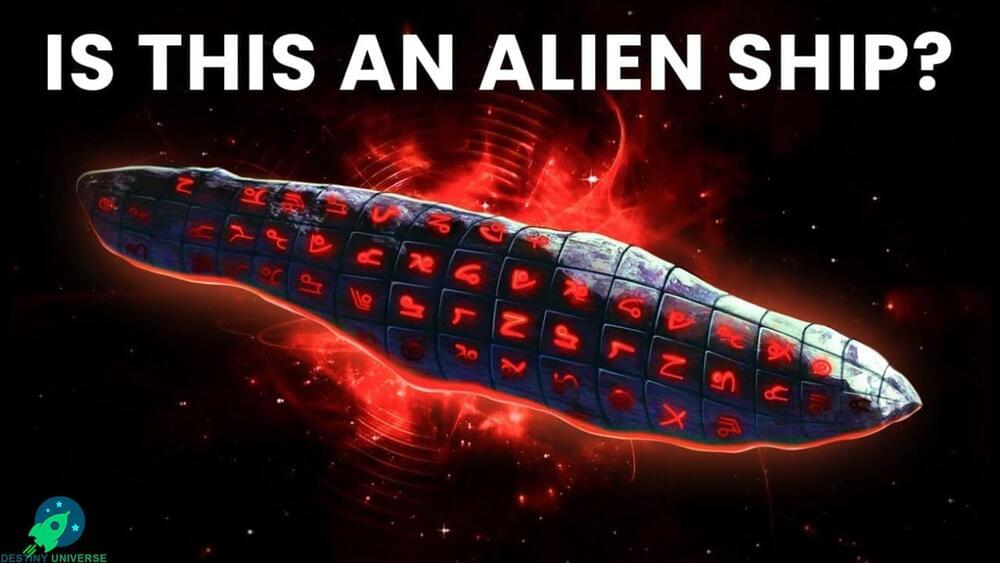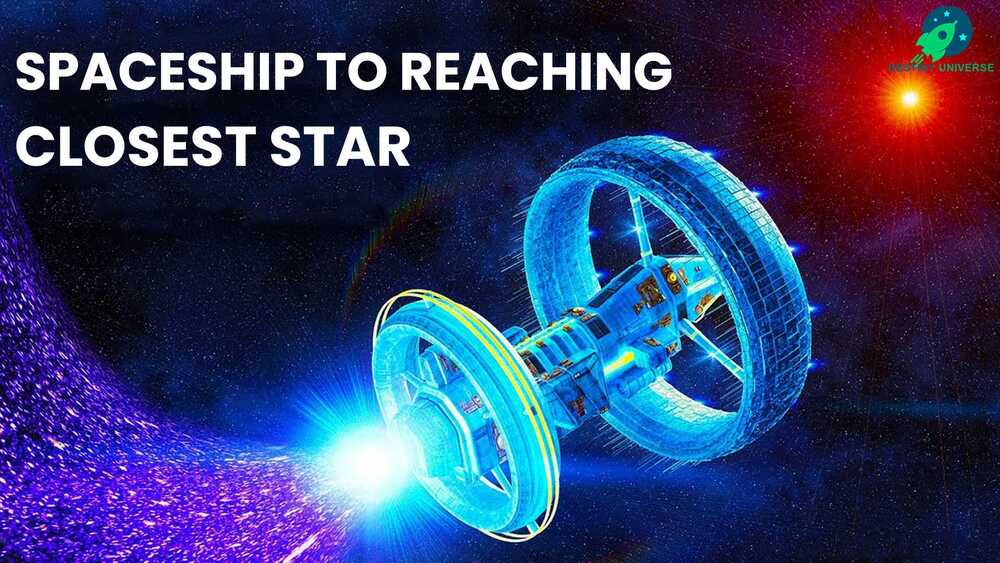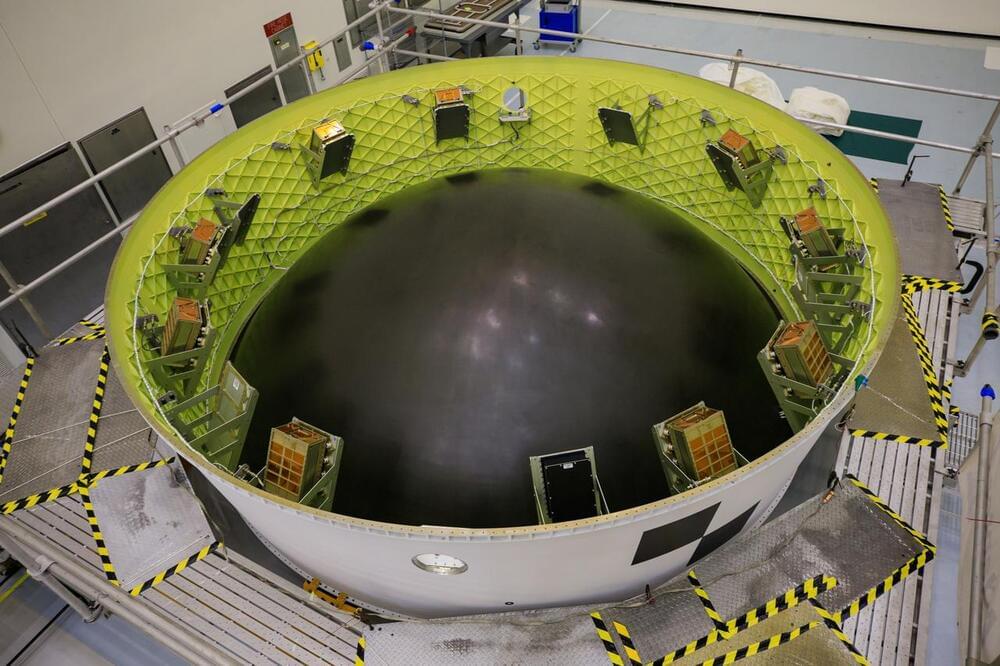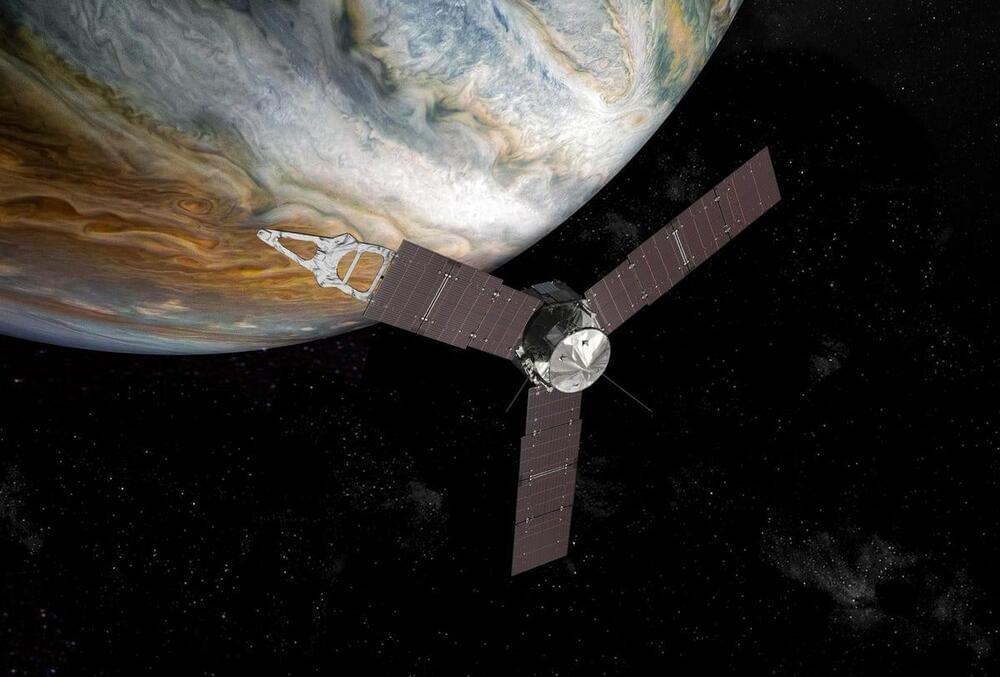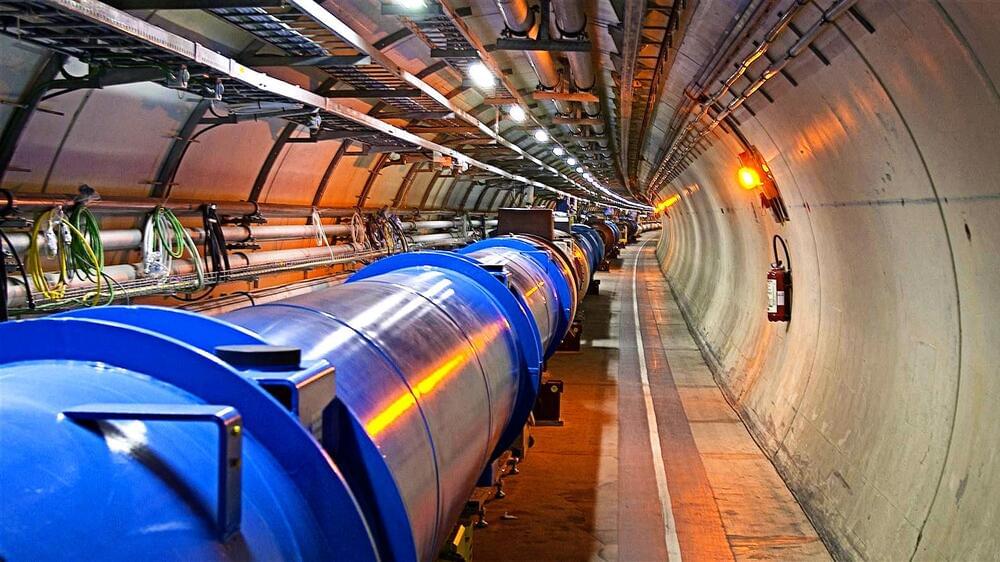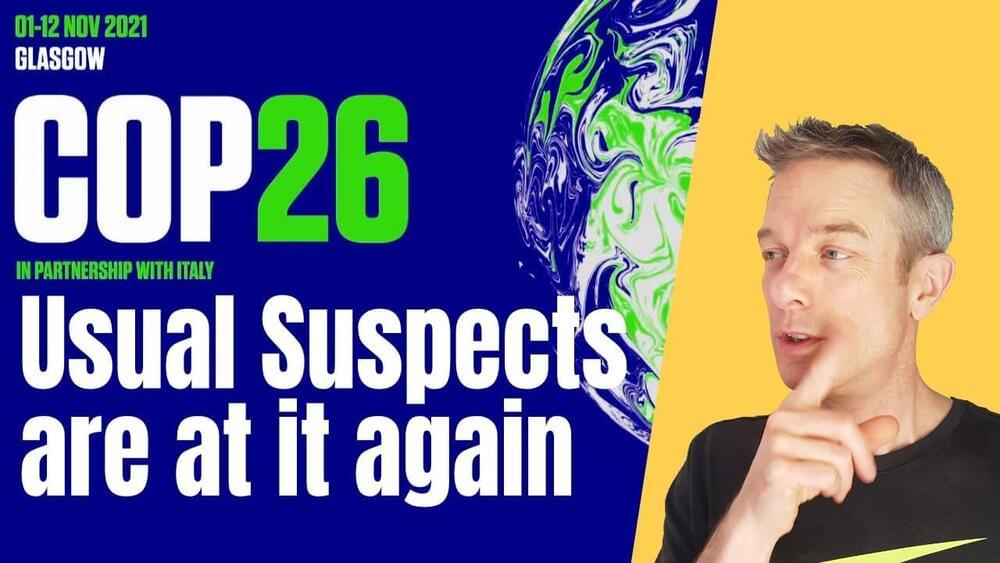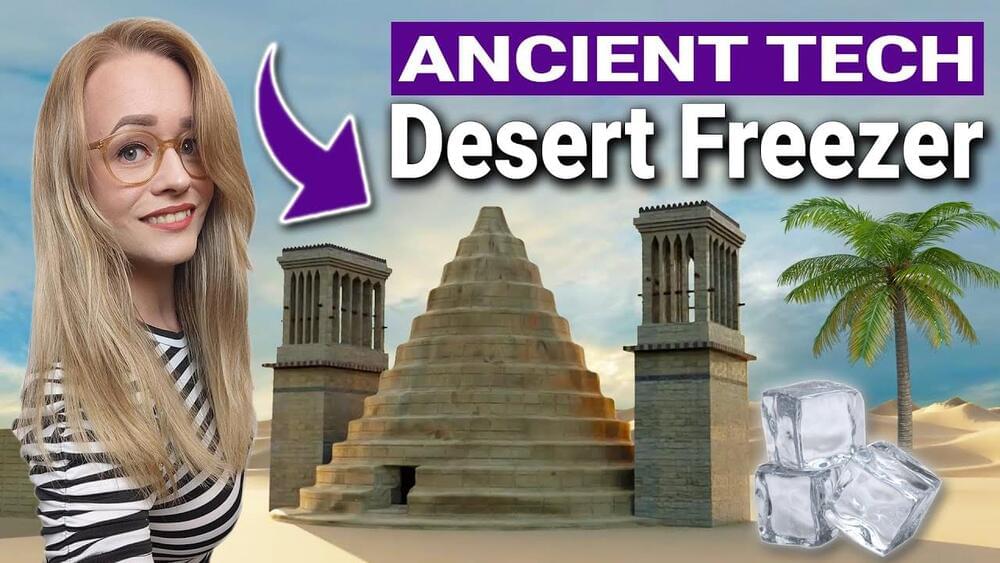Workers at NASA’s Kennedy Space Center have lifted the Orion Stage Adapter on top of the Space Launch System moon rocket, adding the structure housing 10 CubeSat rideshare payloads heading into deep space on the Artemis 1 mission. But three of the CubeSat missions missed their opportunity to fly on the first SLS mission.
Teams inside the Vehicle Assembly Building at Kennedy raised the Orion Stage Adapter on top of the Space Launch System rocket Friday evening, according to Madison Tuttle, a NASA spokesperson.
The mounting of the circular adapter structure is one of the final steps in stacking the SLS rocket inside High Bay 3 of the iconic assembly building. The Orion spacecraft, NASA’s human-rated moon ship, will be added to the rocket in the coming days to complete the build-up of the 322-foot-tall (98-meter) launch vehicle for an unpiloted test flight to lunar orbit and back to Earth.
Lucid Group (NASDAQ: LCID), a retailer of luxury EVs as well as advanced battery tech, stands to gain quite a lot should it manage to win a lucrative Saudi contract.
As per an interview by the CEO of Saudi Arabia’s Red Sea project as well as the Amaala luxury tourism initiative, John Pagano, the Kingdom is looking to build “the largest battery storage system in the world.” The video embedded in the tweet below is in English.
Project Cielo: AORUS Newest Modular PC With Integrated 5G Connectivity In a Unusual Design.
The waters are rising!
Posted in augmented reality
Japan is using Augmented Reality to teach children about the dangers of flash floods 🌊 https://bit.ly/3kYclTI
One explanation for this could be the degree of efficiency of each organism’s response to the damage sustained by its cells during its life, which eventually causes them to age. In relation to this, researchers at the Universitat Oberta de Catalunya (UOC) and the University of Leicester (United Kingdom) have developed a new method to remove old cells from tissues, thus slowing down the aging process.
The first images are now coming through to NASA from this week’s flyby of Jupiter by its Juno spacecraft.
This latest close flyby is the 37th of the mission, but this basketball court-sized spacecraft’s images of the giant planet never cease to amaze.
This week’s images even include a rare photo of Jupiter’s moon Europa.
Beauty quarks are unstable, living on average just for about 1.5 trillionths of a second before decaying into other particles. The way beauty quarks decay can be strongly influenced by the existence of other fundamental particles or forces. When a beauty quark decays, it transforms into a set of lighter particles, such as electrons, through the influence of the weak force. One of the ways a new force of nature might make itself known to us is by subtly changing how often beauty quarks decay into different types of particles.
The March paper was based on data from the LHCb experiment, one of four giant particle detectors that record the outcome of the ultra-high-energy collisions produced by the LHC. (The “b” in LHCb stands for “beauty”.) It found that beauty quarks were decaying into electrons and their heavier cousins called muons at different rates. This was truly surprising because, according to the standard model, the muon is basically a carbon copy of the electron – identical in every way except for being around 200 times heavier. This means that all the forces should pull on electrons and muons with equal strength – when a beauty quark decays into electrons or muons via the weak force, it ought to do so equally often.
Instead, my colleagues found that the muon decay was only happening about 85% as often as the electron decay. Assuming the result is correct, the only way to explain such an effect would be if some new force of nature that pulls on electrons and muons differently is interfering with how beauty quarks decay.
I woke up this morning, saw the COP26 headlines and was so irate I had to share my thoughts.
Please excuse this unplanned video.
I woke to headlines this morning that made me so mad I just had to set up my camera to give my thoughts.
My next videos will be on power, precision fermentation and biochar so keep your eyes open.
And remember the future is NOT someone else’s problem.
Check Out Found And Explained; https://www.youtube.com/c/FoundAndExplained.
Become a Channel member:
https://www.youtube.com/channel/UCMwDeEoupy8QQpKKc8pzU_Q/join.
Support me on Patreon: https://www.patreon.com/HistoryWithKayleigh.
Ancient Structures: https://www.youtube.com/playlist?list=PLyM1QcUGVGdfmvhQKoWzGJnJgQ4BfaplL
Ancient Queens: https://www.youtube.com/watch?v=L-5ENRuFn9g&list=PLyM1QcUGVG…Py&index=1
New Discoveries: https://www.youtube.com/playlist?list=PLyM1QcUGVGdfCySvH9f3ReUXsuPbW0hAU
Fact or Fiction?: https://www.youtube.com/playlist?list=PLyM1QcUGVGdeib_J7to1OuMEa6635OoQo.
#yakhchal #yazd #windcatcher.
How did the ancient inhabitants of the hot Iranian desert keep themselves cool during the intensely hot summers where even being in the shade is very unpleasant?
Well, besides the windcatchers they had in their homes of course, since we spoke about them a while ago.
Think about being in the middle of a hot dry desert, it would be a blessing to be able to drink cold beverages and eat ice cream in the middle of summer to cool off, or to keep your meat, dairy, fruits and other foods fresh for longer periods of time by cooling them.
But I am hearing you asking yourselves… ice?? how on earth would they be able to provide ice in the middle of a hot and dry desert?
The answer to that is simple yet innovative; build a Yakhchal.
We don’t know for certain where the first ice houses were built on the planet, and we aren’t sure about when the first yakhchal was built either but we do know that around 400 BCE the Persian engineers were already mastering the art of storing ice in the middle of the desert, it was already a widespread phenomenon around this time.
This shows that the actual invention of the Yakhchal happened much earlier as you don’t master something by doing it for a short amount of time, but it’s unfortunately unclear for how long.
The practice of storing ice itself was already long established by the time of 400 BCE, we know for a fact that the Mongols were already storing ice for quite some time, although again it’s unclear for how long, but there are accounts of them doing it before 400 BCE.
Ice was mentioned in older texts in Iran from before 400 BCE, but there was no mention of how it was produced, which doesn’t allow scholars to interpret that as yakhchals already being used for very long before 400 BCE, although it is of course hypothesized as I said earlier, you don’t master something by doing it for a short amount of time.
Music; Adrian von Ziegler.
